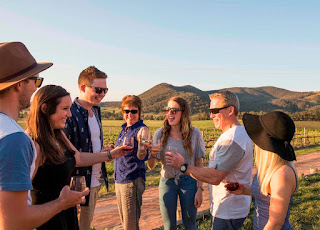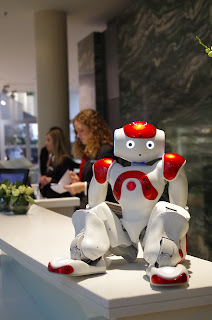There is much more to Japan than big cities and cherry blossoms. I jumped on board the new Hokuriki Shinkansen bullet train to explore some Japanese regions that are off the beaten track but have plenty to fascinate tourists.

Fukui
Step out of Fukui railway station and you are confronted by a group of dinosaurs. Life-size animatronic creatures pay tribute to the many dinosaur remains found in the region and to the local museum, one of only three in the world devoted entirely to the prehistoric creatures.
The Fukui Prefectural Dinosaur Museum in the nearby town of Katsuyama is one of the largest museums in Japan and children delight in the many dioramas and robotic replica dinosaurs.
Fukui is one of the least populated regions of Japan, but is home to several fascinating attractions including the peaceful Ichijōdani Asakura Family Historic Ruins, one of the most important cultural heritage sites in Japan, where you might come across actors dressed as samurai warriors.
The nearby Eihei-ji temple, founded in 1244, is a place of training and reflection for Buddhist monks. Visitors are welcome to stroll among its historic treasures once they have removed their shoes.
The Fukui region is also a centre for traditional Echizen paper-making, and is home to Maruoka Castle, dating back to 1576 and the most ancient in Japan.
The city of Fukui was virtually destroyed by bombing during World War II but has been rebuilt. The city's official symbol is the Phoenix. Just a few blocks from the station seek out the humble Yoroppaken restaurant, where it is believed the dish pork tonkatsu, a local speciality, was first created. Although you may need to point at the menu to order, visitors are made very welcome.
Kawagoe
Walk in the shoes of a traditional Japanese – literally – in Kawagoe, a small town that is just a 30-minute train ride from the hustle and bustle of Tokyo and a world away in atmosphere.
Here in Saitama Prefecture you can take a step back in time to the Edo period in the 17th and 18th centuries, with visits to traditional sword and knife shops and sampling traditional Japanese foods from street market stalls.
Many old storehouses and warehouses dating back to the 18th- and 19th-centuries have been maintained and restored, and visitors can hire kimonos for a day – attracting attention not from locals, who are used to such bizarre spectacles, but from other Japanese visitors.
Visitors can visit the rustic Matsumoto soy sauce factory and take in the pungent aromas, or check out the town's bell-tower, which dates back to the 1600s.
A retro-style bus makes regular loops of all the major tourist attractions although you'll certainly want to stroll down "Kashiya Yokocho" (Penny Candy Alley) with its 20+ traditional-style sweet shops.
Kawagoe is also a good alternative base to staying in expensive Tokyo hotels – many of the locals commute to the capital each day.
Sado Island
A hydrofoil trip (one hour) or ferry ride (2 1/2 hours) away from Niigata, a busy Japanese city on the Japan Sea, Sado Island is home to temples, historic ruins and small villages, like the fascinating fishing hamlet of Shukunegi, where many old buildings remain intact.
This is a remote, quiet area, little visited by overseas tourists although popular with Japanese vacationers looking for a traditional holiday experience.
The island is home to the world-famous Kodo group of Taiko drummers as well as an interesting old gold mine that is now a tourist attraction with animated robots playing the roles of the miners.
Urashima is a lovely resort overlooking the water and its restaurant, in an adjacent building, specialises in superb local seafood.
There are several spa resorts dotted over the island – Japan's sixth-largest – and several ryokan (traditional inns). Many have views of the island's mountain ranges and Lake Kamo.
Back on the mainland, the coastal strip outside Niigata city is known as the Niigata Wine Coast, and is home to five wineries making western-style wines – a surprise in a nation best-known for sake and whisky production. The Cave d'Occi winery offers a fascinating tourism experience.
Hida Takayama
This small mountain town in Gifu Prefecture is a delightful rural escape and slice of the real Japan. It boasts beautiful old homes, two different morning markets, Alpine air, a delightful river; and several affordable restaurants where you can match local sakes with Hida beef.
The best places to stay in this region are the traditional ryokan, or Japanese inns, like Hotakaso Yamano-an, where you sleep on a futon on the floor and can bathe in the open air pools with views of the Japanese Alps. Dinner here is a traditional Kaiseki meal of multiple courses featuring fresh local ingredients, including fish from local streams and sansai (wild mountain vegetables).
There is a magnificent temple downtown. Hida-Kokubunji Temple is the oldest structure in the town and has a three-level pagoda beside a ginko tree that is over 1,200 years old.
Hida Takayama looks at its prettiest in winter, when snowflakes descend and coat the town in white.
# The writer was a guest of Tobu Top Tours and the Hokuriki Shinkansen operators. He was assisted by Qantas, which flies twice daily to Tokyo via Sydney (Sydney-Haneda) or Brisbane (Brisbane-Narita).
# This is an edited version of a story that first appeared on Fairfax websites. www.traveller.com.au

























